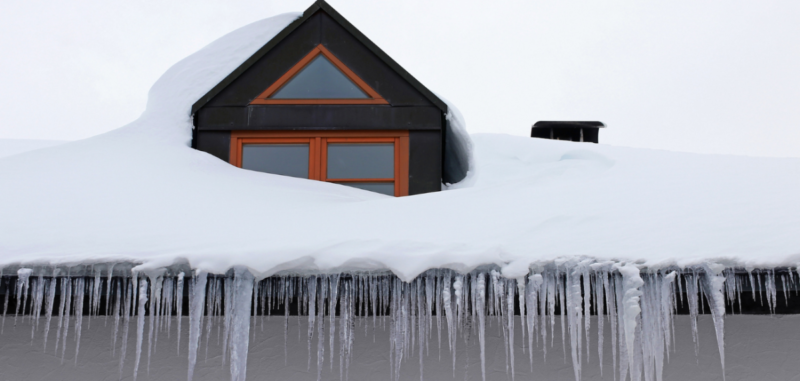Weatherization, also known as weatherproofing, protects a home’s interior from outdoor elements, moisture and extreme temperature fluctuations.
Those who live in cold climates are well versed in adding an extra layer or two to stay warm as temperatures drop. Though homeowners might not think of it as such, the same concept applies to homes in cold climates. Weatherization, also known as weatherproofing, protects a home’s interior from outdoor elements, moisture and extreme temperature fluctuations.
Weatherization begins with a home energy assessment, a critical tool for any new homeowner to identify efficiencies (or lack thereof) and evaluate upgrades to reduce energy use. Real estate professionals can help educate clients and set them up for success by communicating the value of an energy assessment as part of a new home system review.
What to Expect From a Home Energy Assessment
The first step for any home energy assessment is to find a qualified professional who will determine the best course of action for improvements based on the home’s current systems and the homeowner’s energy goals. Many states, like New York, offer home energy assessments with certified energy auditors at no cost to homeowners, and technical assistance and incentives are often available for commercial and multifamily buildings. To find a qualified home energy assessor in your area, direct your clients to:
- Your state or local government’s energy or weatherization office
- Your local energy utility
- The Residential Energy Services Network(link is external)
- The U.S. Department of Energy’s Home Energy Score(link is external) tool
Before an energy assessment, homeowners should make a list of any known issues—drafts, condensation, etc.—and should prepare copies of their most recent energy bills. Assessors will use this information to guide their audit and complete a room-by-room walkthrough, including the attic and basement, to better understand energy usage. They pinpoint exactly where the home might be “leaking” air and wasting energy on both heating and cooling, as well as identify any potential health or safety issues.
Many factors, including the size and layout of your home, can influence an energy assessment. Homeowners should be prepared to answer a range of questions about energy useage or concerns, which will help assessors determine recommendations.
Weatherization 101: Why is it important?
Just like a thermos insulates hot coffee and a cooler keeps beach drinks chilled, weatherization gives a home a protective shield against the elements. The goal is to lock out extreme temperatures to help maintain consistent and comfortable temperatures inside.
In a typical home, 43% of annual energy consumption goes toward space heating(link is external), but if the home isn’t properly weatherized, air leaks can waste 25%-40% of the energy(link is external) used for heating and reduce overall efficiency.
Beyond the potential cost savings, weatherization is also important for the comfort and safety of a home home. Drafts and air leaks can cause uneven temperatures throughout a home, and can also lead to poor ventilation, exposure to mold and allergens from moisture and pollutants.
Common and Cost-Effective Weatherization Upgrades
Seal Air Leaks
Air that leaks through cracks in the walls, floors and roof of the home can disrupt heating and cooling efficiency and comfort. Some leaks, like those around windows and floorboards, are easily noticeable, while others in less obvious areas like the attic or foundation may go unnoticed without a professional energy audit.
Homeowners have multiple options for air sealing: weatherstripping, caulking and spray foams are realistic DIY projects to mitigate leaks and start to recoup energy savings. Working with a qualified contractor is recommended for larger air-sealing projects like attics, basements or crawlspace rim joists, or other hard-to-reach locations.
Upgrade Windows and Doors
Weatherstripping and caulking windows and doors can help minimize air leaks, but in some cases repairing or replacing them may be necessary. Homes with single-pane or older windows can benefit from installing storm windows or insulated panels(link is external), or upgrading to double- or triple-pane windows. Consider the National Fenestration Rating Council rating when looking for the most efficient option. Installing new exterior doors can also help with heat retention.
Add Insulation
Insulation creates a stronger thermal barrier between the interior and exterior of your home, which can improve efficiency and temperature control, limit noise, and protect against pests. Attics, basements, crawl spaces and exterior walls are all common locations that can benefit from adding or replacing insulation. By adding insulation and air sealing together, homeowners can expect to save as much as 15% on heating and cooling costs(link is external).
Check the HVAC System
Heating, ventilation and air conditioning systems regulate and move warm and cool air throughout your home. Over time, the air ducts in HVAC systems can develop leaks, especially at the seams, decreasing efficiency and increasing costs. Work with a reputable HVAC contractor to seal the ducts and, if your HVAC system is on its last leg, consider replacing the system with a heat pump that can deliver year-round comfort and long-term savings.
Next Steps
Weatherization is an investment in comfort, safety and long-term energy savings. Currently, many weatherization upgrades qualify for both state incentives and Inflation Reduction Act tax credits. Additional IRA rebates are planned for 2024, but are not yet available to consumers. Learn more about creating energy efficiencies at home by contacting the energy authorities in your state.
Source: nar.realtor













